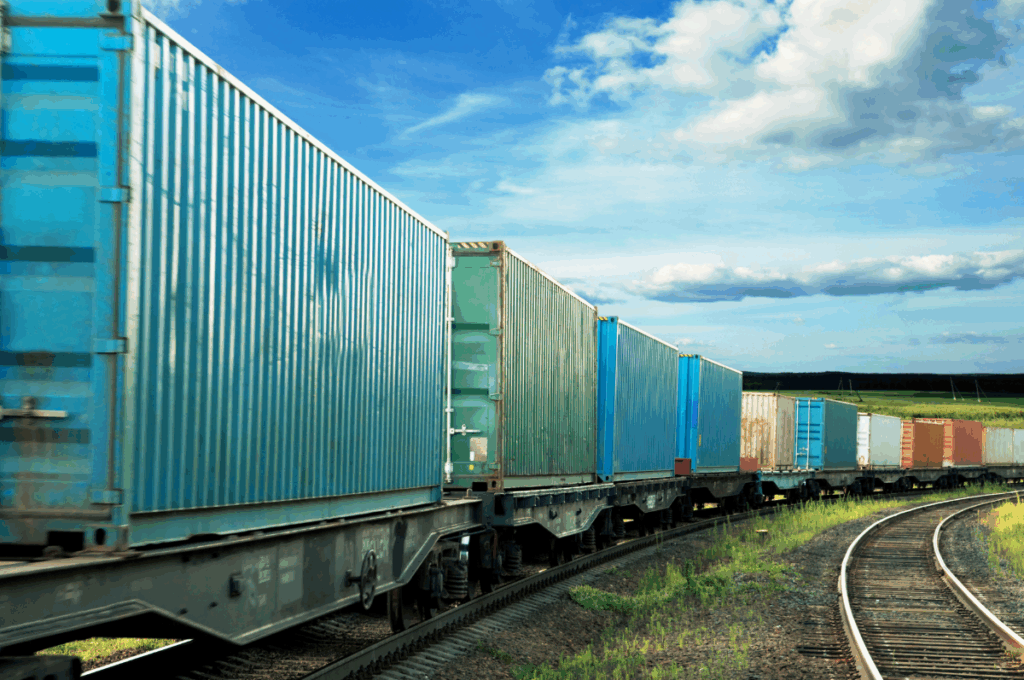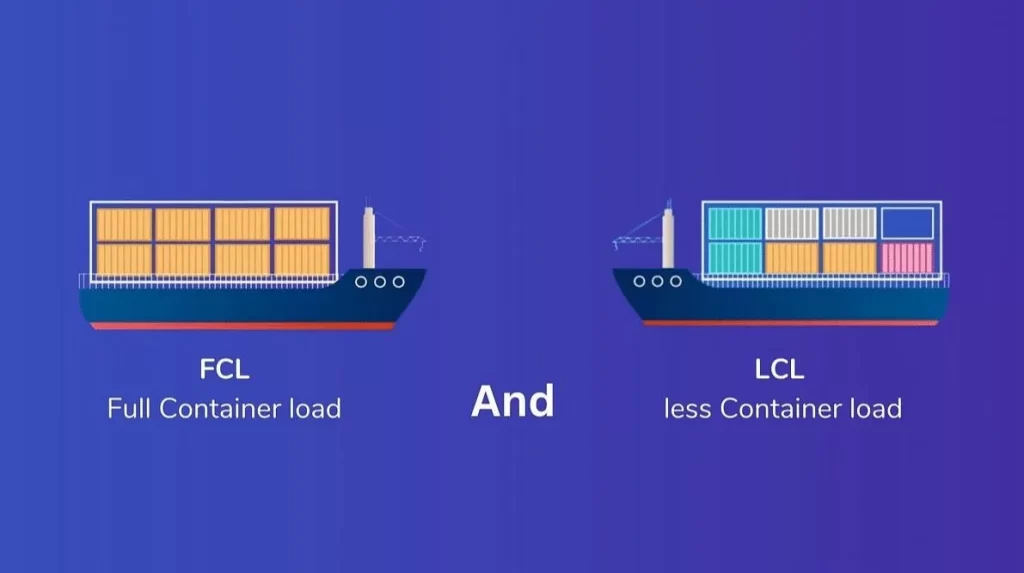- By TOP CHINA FREIGHT
- September 22, 2025
- Rail Freight, Shipping
Table of Contents
Rail freight China to Europe has become a vital link for global supply chains. Many businesses face the challenge of balancing cost, speed, and reliability in international logistics. With rail transport, companies now have an efficient middle-ground solution between ocean freight and air freight. This article explains everything you need to know about rail freight from China to Europe, including transit times, pricing, benefits, and best practices to optimize your shipping strategy.

What is rail freight from China to Europe?
Rail freight China to Europe refers to the movement of goods by train across the Eurasian land bridge. The network spans over 13,000 kilometers and connects major Chinese cities such as Chongqing, Yiwu, and Xi’an with European hubs including Duisburg, Warsaw, and Madrid.
Unlike sea freight, rail avoids long ocean transits, and unlike air freight, it is significantly more cost-effective. Therefore, rail freight offers a balanced logistics solution for businesses needing faster delivery without paying premium air cargo rates.
How Much Does It Cost to Import Goods from China to India?

Rail freight pricing depends on several variables: container size, cargo weight, route selection, and seasonal demand. On average, rail freight costs range between USD 7,000–9,500 per 40ft container, which is about 50% cheaper than air freight but 30–40% higher than ocean freight.
| Shipping Method | Average Cost (40ft) | Transit Time | Pros | Cons |
|---|---|---|---|---|
| Ocean Freight | USD 4,000–6,000 | 30–40 days | Cheapest, large volumes | Long transit, port congestion |
| Rail Freight | USD 7,000–9,500 | 15–20 days | Faster than sea, cost-effective | Limited routes, customs checks |
| Air Freight | USD 12,000–15,000+ | 5–7 days | Fastest, reliable | Very expensive, weight limits |
Businesses should also account for handling fees, customs clearance, and potential surcharges during peak seasons.
How long does rail freight take from China to Europe?
Transit time usually takes 15–20 days, depending on origin and destination. For example, a train from Xi’an to Duisburg takes around 16 days, while a shipment from Yiwu to Madrid can take up to 18–20 days.
| Route | Average Transit Time | Main European Hub |
|---|---|---|
| Xi’an → Duisburg | 16 days | Germany |
| Chongqing → Warsaw | 17 days | Poland |
| Yiwu → Madrid | 18–20 days | Spain |
Compared with sea freight, rail is nearly twice as fast, making it ideal for businesses that require predictable delivery schedules but cannot justify air freight costs.
Why choose rail freight over sea or air transport?
Cutting transit times nearly in half.
Saving 40–60% in shipping costs.
Trains produce 80% fewer CO₂ emissions compared to planes.
Rail avoids port congestion and flight cancellations.
What goods are suitable for rail freight?
Not all products are ideal for rail transport, but many industries benefit from its balance of speed and cost.
Best-suited cargo includes:
- Electronics and consumer goods
- Automotive components
- Machinery and spare parts
- Textiles and fashion items
- Medical supplies and equipment
Less suitable cargo includes:
- Perishable food (unless refrigerated containers are used)
- Hazardous materials with strict transport restrictions
What customs procedures apply to rail freight China to Europe?

Customs clearance is a critical step in rail freight. Both Chinese and European authorities require accurate documentation to avoid delays.
Commonly required documents:
| Document | Purpose |
|---|---|
| Commercial Invoice | Proof of sale and value |
| Packing List | Cargo details for inspection |
| Bill of Lading (Rail Waybill) | Contract of carriage |
| Customs Declaration | Required for import/export clearance |
| Certificate of Origin | Confirms where goods are manufactured |
Errors in paperwork may result in penalties or shipment delays. Therefore, businesses often work with experienced freight forwarders who ensure compliance with international trade regulations.
Can small businesses use rail freight services?

Yes. Rail freight is not limited to large enterprises. Many freight forwarders offer Less-than-Container Load (LCL) services, allowing small businesses to ship smaller volumes by consolidating goods with others.
LCL Rail Freight:
More affordable for low-volume shipments.
FCL Rail Freight:
Best for full container loads, offering security and faster handling.
For small businesses, this makes rail a practical solution to expand trade between China and Europe without committing to full container costs.
What are the pros and cons of rail freight?
| Pros | Cons |
|---|---|
| Faster than sea freight | More expensive than sea freight |
| Cheaper than air freight | Limited coverage in remote areas |
| Environmentally friendly | Customs delays possible |
| Reliable schedules | Restricted cargo types |
| Suitable for mid-value goods | Seasonal congestion |
By evaluating these factors, businesses can determine if rail freight aligns with their supply chain needs.
Case Study: Electronics shipment from China to Germany

A mid-sized electronics company in Shenzhen faced delays with sea freight, causing stock shortages in Europe. Air freight was too costly for their margin. They switched to rail freight from Xi’an to Duisburg.
- Cargo: 10x 40ft containers of electronics
- Transit Time: 16 days (vs. 35 by sea)
- Cost: USD 8,200 per container (vs. USD 13,500 by air)
- Result: Faster market entry, improved cash flow, reduced inventory shortages
This case demonstrates how rail freight can provide a competitive edge by balancing speed and cost.
How to optimize your rail freight shipments
Reserve space early, especially during peak seasons.
Use LCL options to save costs.
Protect goods from vibration and temperature changes.
Ensure compliance with customs regulations.
Use digital platforms for real-time visibility.
Conclusion
Rail freight China to Europe is transforming global trade by bridging the gap between ocean and air shipping. It provides a faster, cost-efficient, and greener solution for businesses of all sizes. With transit times of around 15–20 days and costs significantly lower than air freight, it is ideal for mid-value, time-sensitive goods. Companies that adopt rail freight as part of their logistics strategy can enjoy smoother operations, reduced costs, and improved delivery schedules.
Need a Shipping Quote?
If you want expert guidance and peace of mind, our team is ready to assist.
TJ China Freight offers tailored solutions to help businesses of all sizes ship more reliably from China.

FAQ
Q1:Is rail freight cheaper than sea freight?
No, rail freight is usually more expensive than sea freight but much faster. It is typically 30–40% costlier than ocean shipping but saves nearly half the transit time.
Q2:Can refrigerated cargo be transported by rail freight?
Yes, reefer containers are available, but space is limited. They are mostly used for pharmaceuticals or high-value perishables, and shippers must book well in advance.
Q3:What happens if customs delays occur?
Customs inspections may add 1–3 days. A reliable forwarder helps minimize risks.
Q4:Do all European countries accept rail freight?
No. Rail mainly connects to hubs like Germany and Poland, with trucks handling final delivery.
Q5:What is the difference between FCL and LCL rail freight?
FCL is one shipper per container, while LCL combines goods from several shippers.
